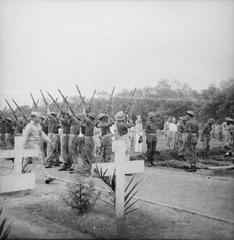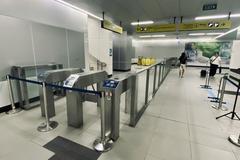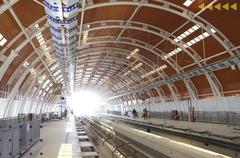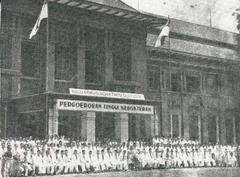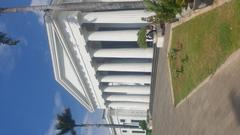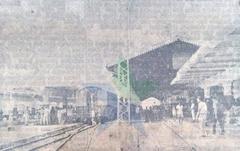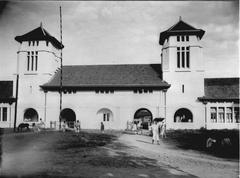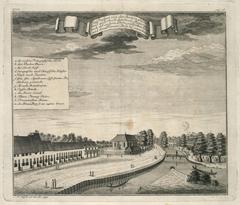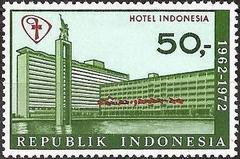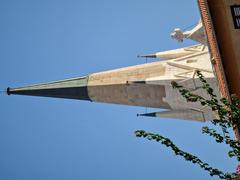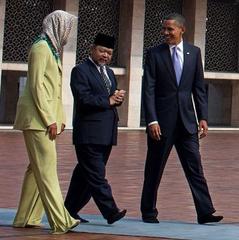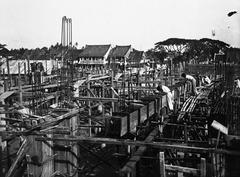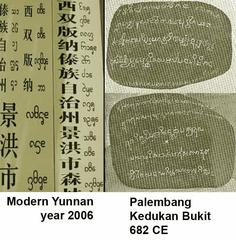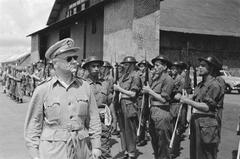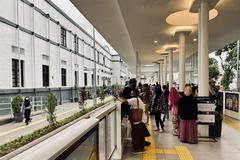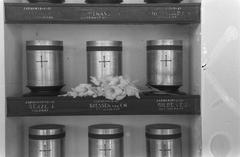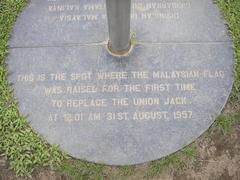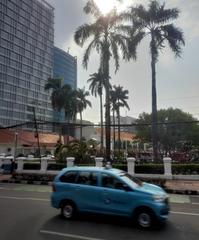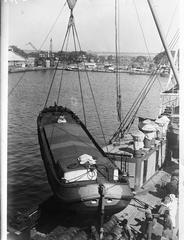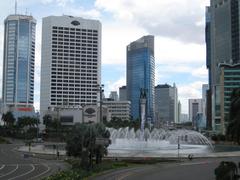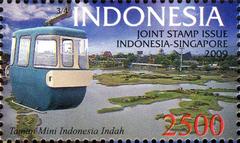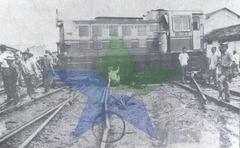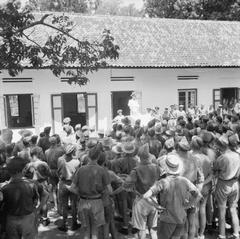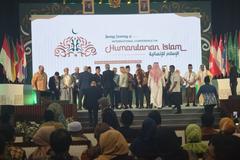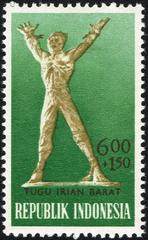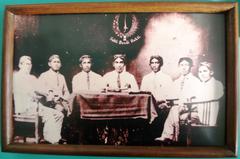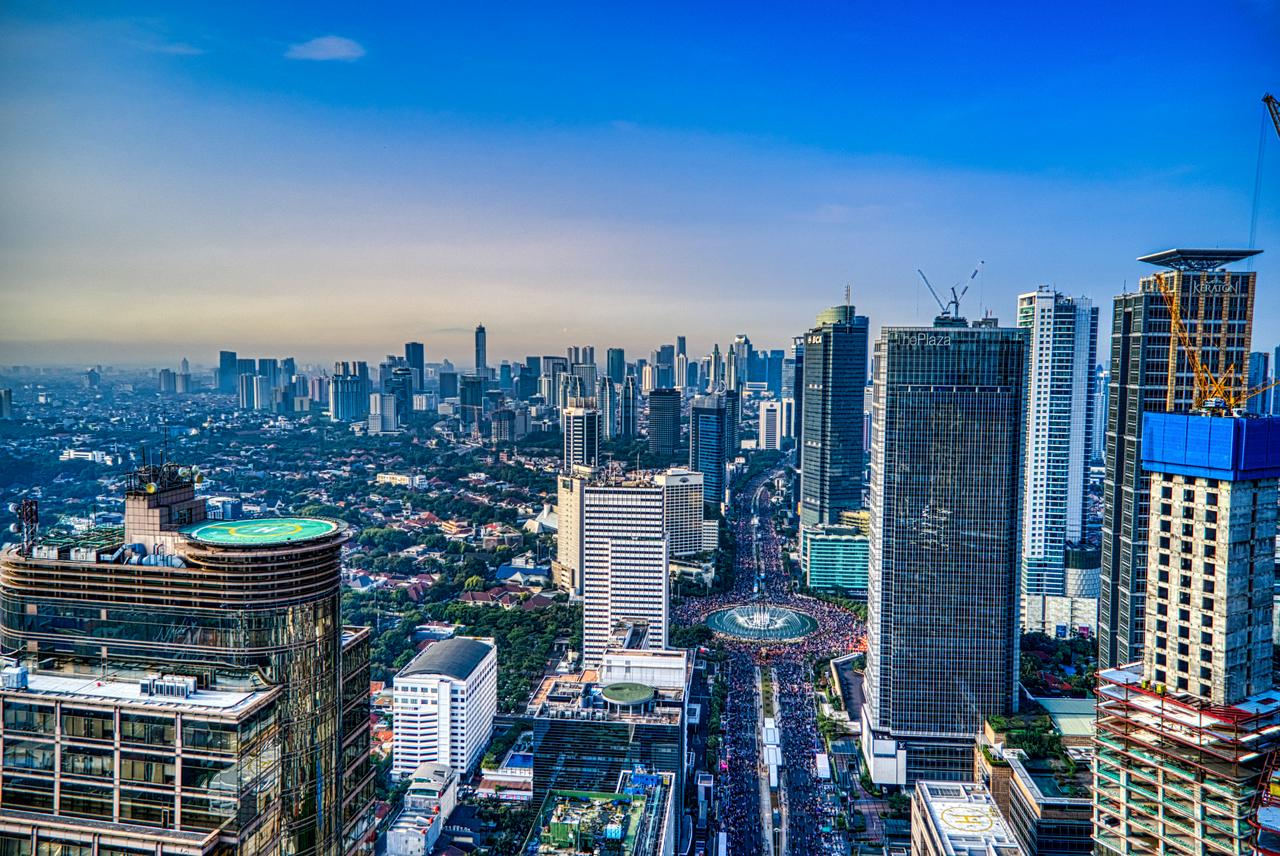
Comprehensive Guide to Visiting Jakarta, Indonesia
Date: 13/08/2024
Captivating Introduction
Welcome to Jakarta, the bustling capital of Indonesia, where history and modernity collide in an exhilarating dance. Once known as the ‘Queen of the East,’ Jakarta offers a unique blend of ancient kingdoms, colonial legacies, and vibrant contemporary culture. Imagine a city where the scent of cloves and nutmeg once filled the air, now adorned with towering skyscrapers and bustling markets. From the historic Sunda Kelapa harbor to the iconic National Monument (Monas), Jakarta is a city of contrasts and surprises, waiting to be explored. (New World Encyclopedia, Britannica, Wikipedia)
Why is Jakarta often referred to as the ‘Big Durian’? Much like the infamous fruit, the city is bold, complex, and unforgettable. Dive into Jakarta’s rich historical tapestry, where early Hindu kingdoms met Portuguese explorers and Dutch colonialists, leaving a legacy of intricate canals, grandiose buildings, and a resilient spirit. Picture yourself wandering through the cobbled streets of Kota Tua (Old Batavia), feeling the pulse of the past, or standing in awe at the towering Istiqlal Mosque, a symbol of Indonesia’s religious harmony.
But Jakarta is more than its history. It’s a living, breathing metropolis teeming with life. The city was the epicenter of Indonesia’s reform movement in 1997, transforming it into a modern hub of economic and cultural activity. Today, Jakarta is a sprawling urban landscape filled with hidden gems, from quirky cafes to secret gardens. Whether you’re a history buff, a foodie, or an adventurer, Jakarta promises an unforgettable experience. So, fasten your seatbelts and get ready to uncover the secrets of Jakarta. Your adventure begins now! (Facts and Details, Plan and Explore)
Table of Contents
- Historical Overview
- Welcome to Jakarta: A Journey Through Time
- Early Settlements and Kingdoms: The Birth of a City
- Portuguese and Dutch Influence: Drama on the High Seas
- Batavia: The Dutch Colonial Era – A Tale of Two Cities
- Japanese Occupation and Independence: From Shadows to Freedom
- Post-Independence Development: Sukarno’s Vision
- The Reform Movement and Modern Jakarta: A City Transformed
- Hidden Gems and Quirky Spots: Discover the Unseen
- Visitor Tips for a Memorable Experience in Jakarta
- Must-Visit Attractions in Jakarta, Indonesia
Historical Overview of Jakarta
Welcome to Jakarta: A Journey Through Time
Did you know Jakarta was once dubbed the ‘Queen of the East’? This city is a treasure chest of history, where ancient kingdoms blend seamlessly with modern skyscrapers. Get ready to explore Jakarta’s vibrant past, from the spice-scented air of Sunda Kelapa to the bustling streets of modern-day Jakarta. Fasten your seatbelts; this city has secrets waiting just for you!
Early Settlements and Kingdoms: The Birth of a City
Jakarta’s story starts way back in the 4th century CE along the Ciliwung River. Picture this: a bustling Hindu port, part of the Indianized kingdom of Tarumanegara, followed by the Hindu Kingdom of Sunda. Ships from China, Champa (Vietnam), and various Indonesian islands would dock at Sunda Kelapa, making it a buzzing trading hub (New World Encyclopedia).
Portuguese and Dutch Influence: Drama on the High Seas
In 1522, the Portuguese made their grand entrance, only to be ousted by the Sultan of Bantam in 1527, who renamed the area Jayakerta, meaning ‘Glorious Fortress’ (Britannica). Enter the Dutch East India Company (VOC) in 1619, led by Jan Pieterszoon Coen, who captured and razed Jayakerta. They built Batavia, a walled city that would become the capital of the Dutch East Indies, complete with canals reminiscent of Amsterdam (Wikipedia).
Batavia: The Dutch Colonial Era – A Tale of Two Cities
Batavia, now Jakarta, was designed with intricate canals, stunning churches, and grand mansions. It was the ‘Queen of the East,’ with warehouses brimming with spices as precious as gold (Facts and Details). But alas, prosperity waned in the 18th century due to the end of the Dutch spice monopoly, clogged canals, and malaria outbreaks.
Japanese Occupation and Independence: From Shadows to Freedom
World War II saw the Japanese occupy Indonesia, renaming the city Jakarta. After Japan’s surrender in 1945, Indonesian nationalists declared independence on August 17, 1945. Jakarta was officially recognized as the capital after Indonesia’s full independence on December 27, 1949 (Wikipedia).
Post-Independence Development: Sukarno’s Vision
Indonesia’s founding president, Sukarno, had grand plans for Jakarta. He launched several major projects, including a clover-leaf highway, major boulevards like Jalan Sudirman, and iconic monuments such as the National Monument (Monas) (New World Encyclopedia). These projects aimed to modernize the city while reflecting nationalistic and modernist architecture.
The Reform Movement and Modern Jakarta: A City Transformed
Jakarta was the epicenter of the Indonesian Reform movement in 1997, leading to significant political and economic changes. Today, Jakarta is a sprawling metropolis that blends its historical roots with rapid modernization. The cityscape features skyscrapers, shopping malls, and modern infrastructure, yet retains pockets of historical significance, such as Kota Tua (Old Batavia) (Facts and Details).
Hidden Gems and Quirky Spots: Discover the Unseen
Kota Tua (Old Batavia)
Kota Tua is a treasure trove of colonial architecture, cobbled streets, and the iconic Fatahillah Square. It’s the cultural heart of Jakarta, attracting artists, photographers, and history buffs. Don’t miss the Jakarta History Museum for a deep dive into the city’s past (The Crazy Tourist).
Sunda Kelapa Harbor
Sunda Kelapa Harbor is a living testament to Jakarta’s maritime heritage. Traditional wooden schooners, known as ‘phinisi,’ are still in use today. Visit the nearby Maritime Museum to explore Indonesia’s naval history (Compass Visits).
National Monument (Monas)
Monas stands as a symbol of Indonesia’s struggle for independence. This 132-meter-high structure, topped with a gold-coated flame, offers panoramic views from its observation deck. The underground museum at Monas details Indonesia’s journey to independence (Travel Triangle).
Jakarta History Museum
Housed in the old Town Hall of Batavia, the Jakarta History Museum is a treasure chest of artifacts from prehistoric times to the present. Explore ancient inscriptions, maps, and relics from the Dutch colonial era in this splendid example of Dutch colonial architecture (Plan and Explore).
Cultural Significance: A Tapestry of Influences
Jakarta’s history is a blend of Hindu, Muslim, and European influences. This diverse heritage is reflected in its architecture, cuisine, and cultural practices. The city’s historical sites offer a glimpse into its complex past, making Jakarta a fascinating destination for history and culture enthusiasts.
Interactive and Fun Elements: Dive Deeper
- Scavenger Hunt: Create a scavenger hunt for historical landmarks. Can you find the oldest building in Kota Tua?
- Food Quest: Embark on a quest to taste traditional dishes. Can you handle the heat of Jakarta’s street food?
Visitor Tips: Practical Info with a Twist
- Best Time to Visit: May to September is the best time to visit Jakarta to avoid the wet season. Think of it as Jakarta’s ‘sunny side up’ season!
- Getting Around: Jakarta’s traffic can be a beast. Tame it by using public transportation like the TransJakarta bus system or ride-hailing services.
- Local Etiquette: Dress modestly, especially at religious sites. A few phrases in Bahasa Indonesia can go a long way in making local friends!
- Safety: Jakarta is generally safe, but stay vigilant, especially in crowded areas and tourist spots.
Myth Busting and Surprises: The Unexpected Jakarta
- Common Misconceptions: Think Jakarta is just another busy city? Think again! From hidden temples to secret gardens, Jakarta is full of surprises.
- Surprising Facts: Did you know Jakarta has its own Little Tokyo in Blok M? It’s a slice of Japan in the heart of Indonesia.
Call to Action: Your Jakarta Adventure Awaits!
Ready to uncover Jakarta’s secrets? Download Audiala to get beautifully crafted audio guides that will make your exploration even more enriching. Whether you’re wandering through Kota Tua or marveling at Monas, let Audiala be your guide.
Visitor Tips for a Memorable Experience in Jakarta
Transportation Tips
Navigating Jakarta’s legendary traffic can be an adventure in itself! Here are some insider tips to make your journey smoother:
- TransJakarta Bus System: Your superhero in the city, zooming past the traffic with dedicated lanes. Feel like a VIP as you glide through the bustling streets.
- Commuter Trains: Hop on the KRL train system for a scenic ride through the city and its suburbs. Perfect for longer trips with picturesque views.
- Ride-Hailing Services: Gojek and Grab are like your personal chauffeurs, offering everything from motorbike taxis to comfy car rides. Pro tip: Opt for a motorbike taxi during rush hour to weave through the traffic like a local!
Best Times to Visit
Jakarta’s tropical climate keeps it warm and humid year-round. For the best experience, visit during the dry season from June to September. Picture clear skies, less rain, and more outdoor fun!
Accommodation Tips
Whether you’re a luxury lover or a budget backpacker, Jakarta has a place for you:
- Luxury Hotels: Treat yourself at the Ritz-Carlton Jakarta or the Mandarin Oriental, where opulence meets impeccable service.
- Mid-Range Hotels: Enjoy great value at places like Mercure Jakarta Kota and Harris Vertu Hotel, offering comfort without breaking the bank.
- Budget Accommodations: Six Degrees and The Packer Lodge are perfect for savvy travelers looking for a cozy stay.
Safety Tips
Stay safe and sound with these tips:
- Avoid Isolated Areas: Stick to lively, well-lit places, especially at night.
- Beware of Pickpockets: Keep your belongings secure in crowded spots like markets and public transport.
- Use Reputable Transport: Choose registered taxis or ride-hailing services to avoid scams.
Cultural Etiquette
Blend in like a local with these fun tips:
- Dress Modestly: Show respect, especially at religious sites like Istiqlal Mosque.
- Respect Religious Practices: Be mindful of prayer times and avoid eating or drinking in public during Ramadan.
- Use Polite Gestures: A slight bow or nod is a common greeting. Avoid pointing with your index finger; use your thumb or whole hand instead.
Dining Tips
Jakarta is a foodie’s paradise! Here’s where to start:
- Street Food: Dive into Nasi Goreng, Satay, and Gado-Gado at street stalls for an authentic taste. Can you smell the sizzling satay? Yum!
- High-End Restaurants: Dine in style at Plataran Menteng and Namaaz Dining, where culinary art meets unforgettable flavors.
- Local Markets: Pasar Baru and Tanah Abang Market are perfect for sampling local snacks and buying fresh produce. Experience the hustle, bustle, and delicious aromas!
Shopping Tips
From traditional markets to sleek malls, Jakarta has it all:
- Traditional Markets: Bargain your heart out at Pasar Baru and Tanah Abang Market. It’s a treasure hunt waiting to happen!
- Shopping Malls: Grand Indonesia Mall and Plaza Senayan offer a mix of international brands, local boutiques, and delectable dining options.
Health and Wellness Tips
Stay healthy and happy with these tips:
- Stay Hydrated: Jakarta’s tropical climate can be dehydrating. Always carry a bottle of water and drink plenty of fluids.
- Avoid Tap Water: Stick to bottled or filtered water to avoid any stomach issues.
- Mosquito Protection: Use insect repellent and wear long sleeves and pants to protect against mosquito bites, especially during the rainy season.
Essential Apps
These apps are your best friends in Jakarta:
- Gojek and Grab: Essential for getting around the city.
- Google Maps: Your go-to for navigation and finding nearby attractions.
- Traveloka: Handy for booking flights, hotels, and attractions.
Language Tips
A little Bahasa Indonesia goes a long way! Try these phrases:
- Greetings: “Selamat pagi” (Good morning), “Selamat siang” (Good afternoon), and “Selamat malam” (Good evening). Pronounced: seh-lah-maht pah-gee, seh-lah-maht see-ahng, seh-lah-maht mah-lahm.
- Thank You: “Terima kasih” (Thank you). Pronounced: tuh-ree-mah kah-see.
- Sorry/Excuse Me: “Maaf” (Sorry/Excuse me). Pronounced: mah-ahf.
Conclusion
Ready to explore Jakarta like a local? Download Audiala, your ultimate tour guide app, for beautifully crafted audio guides that enrich your journey. Discover the heart and soul of Jakarta with Audiala. Selamat jalan (Safe travels)!
Must-Visit Attractions in Jakarta, Indonesia
National Monument (Monas)
Kick off your journey at the iconic National Monument (Monas). Standing tall at 132 meters, it’s crowned with a gold-plated flame symbolizing Indonesia’s fiery spirit of independence. Take a ride up the elevator to the observation deck for a jaw-dropping view of Jakarta’s sprawling skyline. Don’t miss the National History Museum at the base, where dioramas and artifacts narrate Indonesia’s path to freedom. Open daily from 8 AM to 4 PM, with extended hours on weekends. Pro tip: Visit during sunset for a mesmerizing view! (Detourista)
Istiqlal Mosque
Just a stone’s throw from Monas is the grand Istiqlal Mosque, the largest in Southeast Asia. With its modern yet traditional architecture, it can host up to 200,000 worshippers. Non-Muslims are welcome to explore outside prayer times, and guided tours are a great way to learn more. Located near Merdeka Square and the Jakarta Cathedral, it’s a testament to Indonesia’s religious harmony. (Detourista)
Jakarta Cathedral
Directly opposite Istiqlal Mosque, the Jakarta Cathedral boasts stunning neo-gothic architecture. Officially called the Church of Our Lady of Assumption, it was consecrated in 1901. Marvel at its stained glass windows, pipe organ, and a museum of religious artifacts. It’s a beautiful symbol of Indonesia’s diversity and tolerance. (Detourista)
Kota Tua (Old Town)
Step back in time in Kota Tua, Jakarta’s historic heart. Wander through colonial buildings from the Dutch East Indies era. Visit the Jakarta History Museum (Fatahilah Museum) and the Wayang Museum for a peek into the past. Enjoy a coffee at a charming café and soak in the nostalgic vibe. Don’t forget to try some street food – it’s an adventure for your taste buds! (Detourista)
National Museum of Indonesia
History buffs, rejoice! The National Museum of Indonesia, or the Elephant Building, is packed with treasures from Indonesia’s past. From prehistoric relics to Hindu-Buddhist sculptures, it offers a deep dive into the nation’s rich heritage. Located on Jalan Medan Merdeka Barat, it’s open from Tuesday to Sunday. Fun fact: The elephant statue in the courtyard was a gift from the King of Thailand! (Detourista)
Ancol Dreamland
For some fun in the sun, head to Ancol Dreamland, Jakarta’s largest recreational park. With over 40 rides at Dunia Fantasi (Fantasy World) and marine life exhibits at SeaWorld Ancol, it’s perfect for families and thrill-seekers. The park also features beaches, a golf course, and an art market. Tip: Wear comfortable shoes – there’s a lot to explore! (The Broke Backpacker)
Sunda Kelapa Port
Sunda Kelapa, Jakarta’s historic port, was once the main hub of the Sunda Kingdom and the Dutch East Indies. Today, it’s a bustling harbor with traditional wooden schooners (phinisi) trading goods between islands. Take a boat tour to experience its vibrant maritime life and learn about its storied past. (Detourista)
Glodok (Chinatown)
Explore Glodok, Jakarta’s lively Chinatown. From the Jin De Yuan Temple, built in 1650, to the bustling Petak Sembilan Market, it’s a sensory feast. Try the street food – from dumplings to herbal drinks – and soak in the rich cultural tapestry. ([The### Glodok (Chinatown) (continued)
Explore Glodok, Jakarta’s lively Chinatown. From the Jin De Yuan Temple, built in 1650, to the bustling Petak Sembilan Market, it’s a sensory feast. Try the street food – from dumplings to herbal drinks – and soak in the rich cultural tapestry. (The Broke Backpacker)
Ragunan Zoo
Animal lovers will adore Ragunan Zoo, home to over 3,000 animals, including Sumatran tigers and Komodo dragons. Established in 1864, this 140-hectare zoo also features a primate center and a children’s zoo. Perfect for a family day out! (Travelsetu)
Taman Mini Indonesia Indah
Discover the cultural diversity of Indonesia at Taman Mini Indonesia Indah, a miniature park showcasing traditional houses, museums, and cultural performances from across the archipelago. Highlights include the Indonesian Museum, the Komodo Museum, and the Keong Emas IMAX Theater. Located in East Jakarta, it’s a cultural treasure trove. (Travelsetu)
Pasar Baru
Shop like a local at Pasar Baru, one of Jakarta’s oldest markets. Dating back to the Dutch colonial era, it’s a bustling hub of textiles, clothing, and electronics. Sample street food and discover local delicacies. It’s a shopping experience steeped in history! (Detourista)
Grand Indonesia Mall
For a modern shopping spree, head to Grand Indonesia Mall, one of Jakarta’s largest and most luxurious malls. From international brands to local designers, it’s a shopper’s paradise. Enjoy diverse dining options and entertainment facilities, including a cinema and an indoor theme park. Located in Central Jakarta, it’s a must-visit for shopaholics! (Travelsetu)
Jakarta Maritime Museum
Housed in a former Dutch East India Company warehouse, the Jakarta Maritime Museum offers a fascinating look at Indonesia’s seafaring history. Explore traditional boats, navigation instruments, and maritime artifacts. It’s a deep dive into the nation’s nautical heritage. (Detourista)
Wayang Museum
In Kota Tua, the Wayang Museum celebrates the traditional art of wayang (puppetry). Discover a diverse collection of puppets from Indonesia and beyond, and catch a wayang performance to see these intricate figures in action. (Detourista)
Sin Tek Bio Temple
Nestled in Glodok, Sin Tek Bio Temple is one of Jakarta’s oldest temples, built by Chinese farmers in the mid-1600s. Dedicated to the deity Guan Yu, it features traditional Chinese architecture and remains an active place of worship. Explore its serene ambiance and historical significance. (The Broke Backpacker)
Call to Action
As your journey through Jakarta comes to a close, it’s clear that this city is a treasure trove of experiences, blending the old with the new in a symphony of contrasts. From the historic Sunda Kelapa harbor to the bustling modernity of Grand Indonesia Mall, Jakarta offers a myriad of adventures for every traveler. The city’s resilience and dynamic spirit are palpable, whether you’re exploring the colonial architecture of Kota Tua or marveling at the grandeur of Istiqlal Mosque and the Jakarta Cathedral standing side by side. (The Crazy Tourist, Travel Triangle)
Jakarta’s rich cultural tapestry, from its diverse cuisine to its vibrant markets, provides a sensory feast that engages all five senses. Hear the calls to prayer mingling with the hustle and bustle of street vendors, taste the fiery spices of local dishes, and see the intricate details of traditional puppetry at the Wayang Museum. The city’s hidden gems, like the serene Sin Tek Bio Temple and the lively Pasar Baru market, offer unique insights into Jakarta’s soul. (Compass Visits, The Broke Backpacker)
Jakarta is not just a destination; it’s an adventure waiting to be uncovered. With Audiala as your guide, you can delve deeper into the city’s secrets, uncover hidden stories, and navigate its bustling streets with ease. Download Audiala to transform your trip into an enriching experience, filled with expert insights and local lore. Whether you’re a curious traveler or a history enthusiast, Jakarta invites you to explore its vibrant streets and discover the magic that lies within. Safe travels on your Jakarta adventure! (Facts and Details, Plan and Explore)
References
- New World Encyclopedia, 2021 source url
- Britannica, 2021 source url
- Wikipedia, 2021 source url
- Facts and Details, 2021 source url
- The Crazy Tourist, 2021 source url
- Travel Triangle, 2021 source url
- Compass Visits, 2021 source url
- Plan and Explore, 2021 source url
- The Broke Backpacker, 2021 source url















